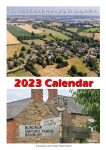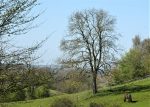(December 2022) Did you know? – Wheathills
 Following a photographic competition, the 12 winning entries now feature each month in the Sibford’s 2023 Calendar. These attractive calendars are available at £6 each or 2 for £10 with proceeds going to Holy Trinity Church. They will find their way to families and friends across the world bringing them a memory of the village we call home. Behind each picture there is a depth of interest or history and I thought I would share the back stories through my monthly ‘Did You Know’ piece through the coming year.
Following a photographic competition, the 12 winning entries now feature each month in the Sibford’s 2023 Calendar. These attractive calendars are available at £6 each or 2 for £10 with proceeds going to Holy Trinity Church. They will find their way to families and friends across the world bringing them a memory of the village we call home. Behind each picture there is a depth of interest or history and I thought I would share the back stories through my monthly ‘Did You Know’ piece through the coming year.
The picture illustrating January was taken on a bright, early springtime day in one of the Wheathills fields in Burdrop looking across the Sib Valley towards Broadway in the far distance.

This timeless view is preserved for us in perpetuity following the purchase of the land known as Wheathills by the Town Estate Charity on behalf of the village. The steep Sib Brook Valley, more suited to sheep husbandry than arable farming, forms part of the Conservation Area which separates the two settlements of Sibford Gower with Burdrop and Sibford Ferris. The valley forms an integral part of the community reinforcing the rural character and separation of the villages. The Sib stream rises east of the village and joins the River Stour at Temple Mill. These streams are unique in Oxfordshire as they run west into the Avon/Severn and not eastwards towards the North Sea – this divide is known as a Watershed.
As villages mentioned in the great Domesday Survey of 1086 the Sibfords have developed from the Manorial estates bestowed on his loyal knights by King William when land held in demesne returned its dues to the King. The dependence on agriculture and sheep husbandry continued through the centuries including the enclosure of the fields in the late 18th century. Now, although the size of farms has increased, the people engaged in agriculture in the Sibfords has significantly reduced. All development in the beautiful Sib Valley has been strongly resisted so we are still able to enjoy these wonderful open countryside views.
Maureen Hicks